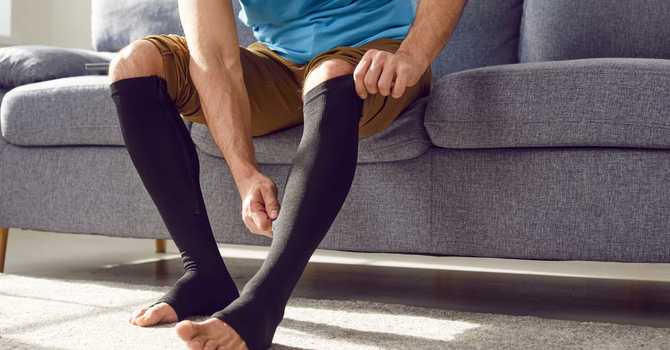
How do you know if that pain in your body is actually sciatica?
You may have heard other people talking about it, done a quick search on Google and maybe even diagnosed yourself with it.
But do you really have sciatica? Let’s talk about it.
What Is Sciatica?
Sciatica is pain that radiates down each leg along the path of the sciatic nerve, which runs from your lower back to your hips and buttocks. Sciatica usually affects only one side of the body.
Sciatica, known medically as lumbar radiculopathy, is can be extremely painful and debilitating to live with. Unfortunately, sciatica is a fairly common condition, with between 10-40% of the population being affected by it at some point in their lives.
The pain that is associated with sciatica is caused by a spinal disc compressing on of the nerves that reside at the base of your spine. The nerve gets trapped and it sends a signal to your brain that gets interpreted as pain. You may also feel numbness or tingling down the back if your leg.
Causes of Sciatica
There are several different causes of sciatica. The most common cause is a herniated or slipped disc in your spine that results in one of your nerve roots getting compressed. Slipped discs occur when the gel-like center of the disc begins to bulge out of the walls of the vertebrae.
Sciatica can also be caused by degenerative disc disease, which is caused by wear and tear on the vertebrae of your spine. This disease can result in spinal stenosis (narrowing of the spinal cord), which traps your sciatic nerve.
Amongst the most common causes of sciatica is osteoarthritis, a condition where the bones and cartilage wear away. If this occurs in the spine, it can lead to sciatica.
If there is trauma to the sciatic nerve or lumbar spine, or tumors are present, you may also experience pain and numbness in the area.
Signs and Symptoms of Sciatica
The main symptoms of sciatica include:
- Pain that begins in your lower back and radiates down one legWeakness in one or both legs
- Tingling or pins and needles in your foot
- Numbness in one leg
- Loss of bladder and/or bowel control
Diagnosing Sciatica
To begin with, your doctor will run through your symptoms. They will ask you if you’re getting any pain, numbness, or weakness in your legs, and how severe each of these symptoms is.
Next, your doctor will most likely perform a physical exam to determine which nerve is causing your symptoms. They may ask you to squat, walk, lung, or raise one leg while lying on your back.
You may be required to go for an x-ray, CT, or MRI scan to check for a herniated disc if the doctor suspects that you have sciatica.
Treatments for Sciatica
This condition can clear up by itself but it may persist for months if untreated. Although many doctors prescribe rest, this can often leave you in more pain and discomfort.
The goal of treatment is always to reduce pain and help you to live without discomfort. If mild, you can treat your sciatica at home with some self-care treatments, such as:
- Applying hot or cold packs to the areas of pain.
- Taking over-the-counter (OTC) medications to reduce pain and swelling. Commonly, non-steroidal anti-inflammatory drugs (NSAIDs) are recommended.
- Performing some gentle stretches to strengthen your muscles and relieve tension in your lower back area. You can find some great stretches in this article, but some of the best stretches include the yoga aphid posture, the cobra pose, and the press-up position.
- Regular exercise to prevent aggravating the compression nerve even further through immobilization. Exercising should not feel painful. If it does, you might need to try other mobilization or stretching movements to help relieve tension around the nerve root first.
If your self-care treatments are proving ineffective after several weeks, you might need more intense treatments. In this case, you should consult a healthcare professional who can use additional treatment options to help relieve your pain and discomfort.
What To Do If You Think You Have Sciatica
Here are some of the treatment options that will be offered by your doctor.
- Prescription medications to relieve pain and reduce inflammation.
- Physical therapy to decrease muscle tension and improve muscle flexibility to reduce pressure on the nerve. Your physical therapist may prescribe a range of exercises, including walking, swimming, and stretching or stability movements.
- Spinal injections of corticosteroid to reduce pain and swelling around the affected nerves. The number of injections you need will depend on your individual circumstances.

There are also alternative therapies that you might find helpful, such as acupuncture, deep tissue massage, and yoga. These are great options to relieve pain alongside other traditional therapies.
If you’re currently experiencing the symptoms above and suspect that you have sciatica, we’d love to help! Book an appointment today so we can perform an assessment and provide you with the best treatment options.
Dr. Ali Perez
Contact Me



